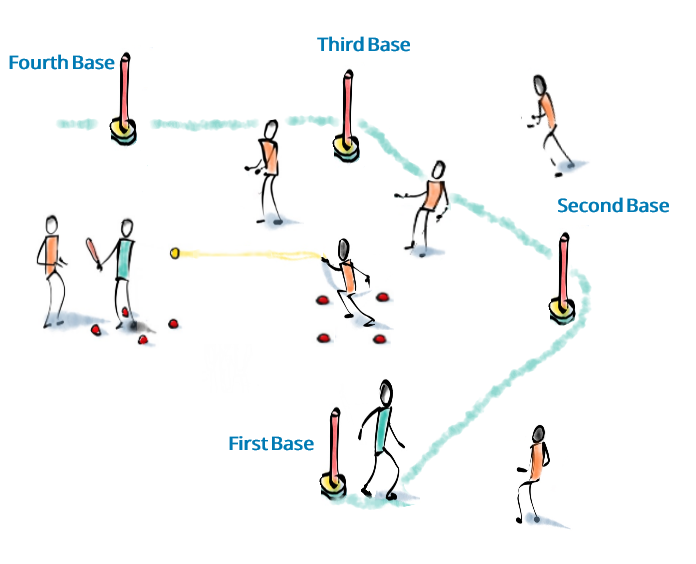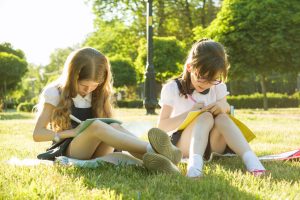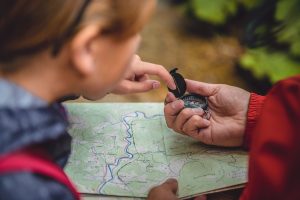‘Outdoor Classrooms’
Here’s why we think Outdoor Learning is so worthwhile…

Life can be busy, complicated, and stressful, for everyone, no less so for children; and in a world packed full of tech, it is important for us all to take a time-out and absorb ourselves into nature.
Data from the ‘Monitor of Engagement with the Natural Environment Survey’ (MENE) tells us that “two hours of nature a week significantly boosts health and wellbeing.”
Children’s mental health is an important topic right now and it is wonderful to see that so many schools are thinking outside of the box to tackle the mental health risks of their pupils.
The classroom is an important learning environment, but not the only one. With other 25 curriculum hours per week, there could be huge benefits to schools creating a wider range of environments and balanced curriculum for pupils. Below we have explored our favourite 7 benefits from ‘outdoor classrooms’ – getting your pupils outside.
1. A fun way to learn
Outdoor classrooms can be a brilliant way for pupils to see, explore and learn. Children learn better when they enjoy what they are doing, so not only can taking your classroom outdoor be an opportunity for children to have fun, smile, and embrace being outdoor, it can also help children to learn and retain information.
2. Helps develop gross motor skills
Young children need the chance to use their whole body to develop their gross motor skills. Being outdoor creates more opportunity and space to skip, jump, run, balance, hop and explore all the ways to be physically active and build body confidence.
3. Develops social skills
Changing the surroundings can really bring something out of a child that cannot be seen in a classroom environment. Some children ‘come out of their shell’ when outside. This change in presence can help create new friendships, build relationships with peers and teaching staff, and help individuals share ideas, work better in groups, and find alternative ways to engage.
4. Boosts emotional wellness, self-esteem, and confidence
Stress prevents creativity. It can affect the mood and behaviour of children. Outside learning (perhaps with a more lenient behaviour policy) can take the classroom environment pressures away leaving pupils feeling more relaxed and confident and willing to learn.
5. Encourages an active & healthy lifestyle
Being outdoor encourages activity. Fresh air can help children sleep better, move more, and want to be outside more. These things lead onto children leading healthier lifestyles including eating and living more healthy. It is important to encourage children to form healthy habits from a young age, and what better way than letting nature do the talking.
6. Promotes understanding and care for the environment
Children become more aware of the environment the more they experience it. They can begin to understand the importance of respecting the world and preserving nature. This can help with future class topics and raise discussions around current affairs such as climate change.
7. Learning through problem solving
Problem solving activities are endless in outdoor space, regardless of its size. Outdoor learning can offer a variety of educational and engaging ways for pupils to solve problems, both individually and as a team. Children will often think of fresh ideas that they may not have considered in a classroom. Team problem solving is also a perfect opportunity to test a child’s leadership qualities.

Creating an outdoor learning environment
If your school is looking to create an outdoor classrooms learning environment you should consider the space required for learning in groups and classes. Will the space be sheltered for all-year-round use? Would a canopy or undercover space be useful? Also, think about the equipment required and any types of furniture, benches, standing tables, etc. and ensure the space is safe, and available to use throughout the day.
If your school already has a designated outdoor learning space that is a great start. A timetable for the space is worth having to ensure it is available to use, but also think about other spaces that could be used around school.
If your school doesn’t have a designated space, it doesn’t mean outdoor learning cannot take place. Think about spaces that are available to use. Get out and investigate. Set some boundaries so children have some freedom to explore… But also have some structure to keep pupils reassured and on task.
Think about your intended lesson theme. Will it work in terms of equipment and resources? Do the children need to be sitting down? Will they require rain coats, hats, wellies?

A good starting point might be having a go at our PE Planning Orienteering lesson plans. Even if you are not a subscriber, you can download lesson one for free.
There’s no ‘wrong way’ to create opportunities for outdoor learning, but there is plenty to gain by simply going out and exploring your outdoor space with your class.




